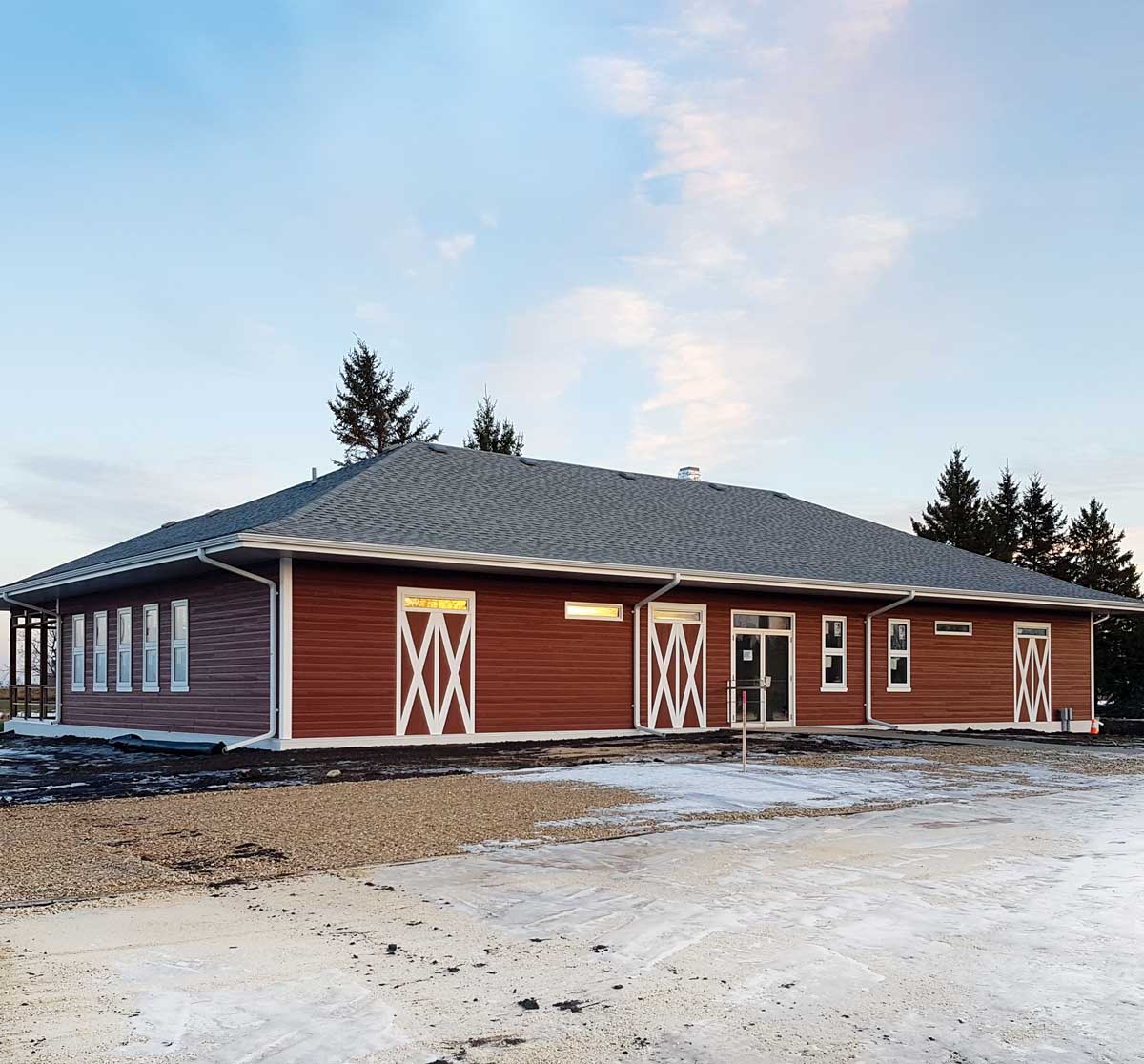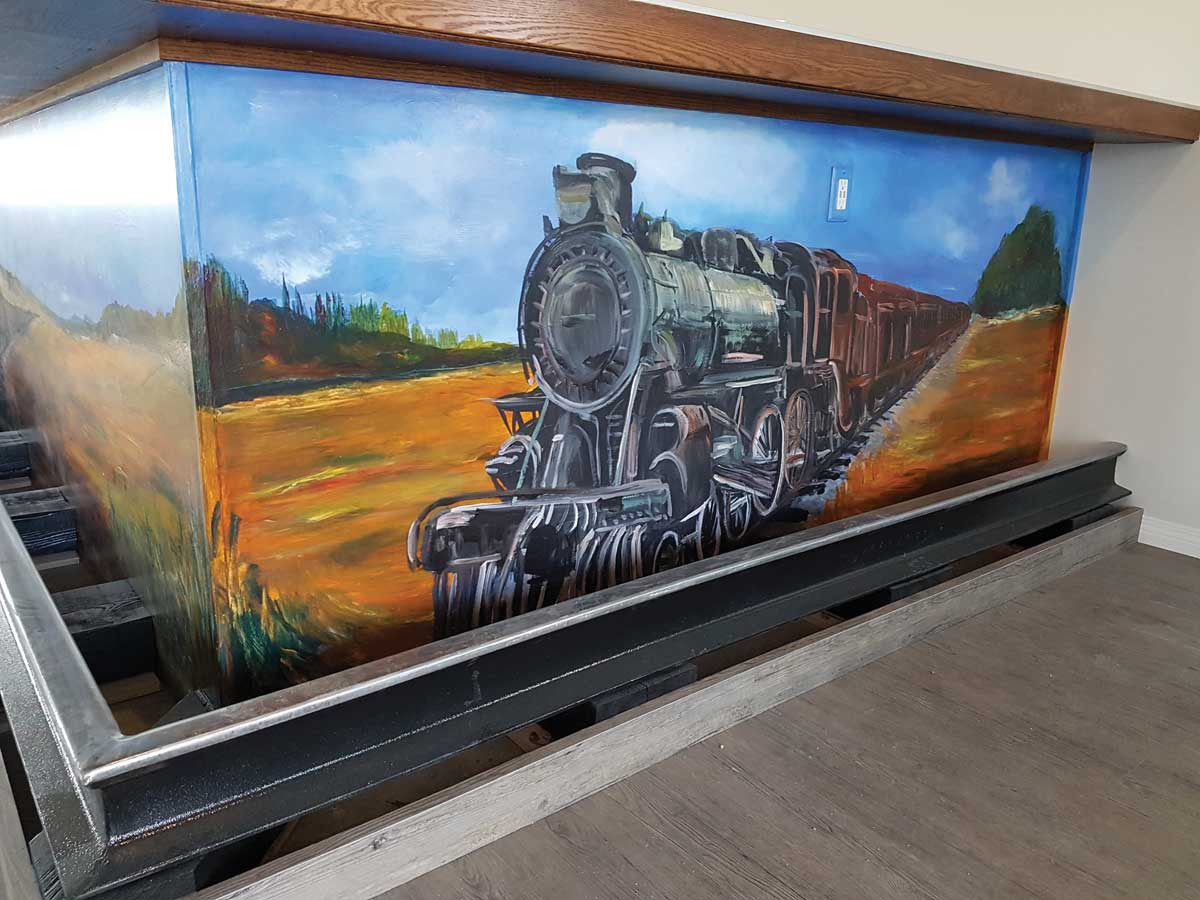By Eva Wasney

The Emerson Golf Course is ready to reopen for the 2018 season thanks to an ambitious vision and a team of dedicated volunteers
Ten years and hundreds of volunteer hours after starting the search for a new plot of land, the Emerson Golf Course is on track to reopen this summer.
The southern Manitoba town of Emerson is located on the banks of the Red River where the waterway crosses over the Canada-United States border. For years, the river’s proximity had wreaked havoc on the local golf course.
“Every spring, we saw the golf course completely underwater to the eaves of the clubhouse,” said Wayne Arseny, former Mayor of Emerson and current chair of the Emerson Golf Course. “We raised the clubhouse 16 feet on stilts and we still had an ongoing problem with the Red River.”
In the mid-2000s, the town council negotiated a one-time grant of $463,000 from the province’s Emergency Measures Organization to find a solution for the perpetually flooded course.
Of the many ideas that were floated to council, the one that made the most logistic and financial sense was to build a new nine-hole course within the town’s ring dike.
“There was no way to dike a golf course,” said Arseny. “We had to make a move and relocate to a dry location.”
The new location, however, came with its own set of hurdles.
Finding enough space for a golf course within the town’s protective dike meant purchasing a tract of land on the east side of town – land that wasn’t initially connected to the municipality’s sewer or gas services.
Turning fields into fairways
The next hurdle was turning the flat prairie field into a full-service golf course, complete with rolling hills, raised tee boxes and water hazards. Bob Felsch, a former Dominion City farm equipment retailer, took on the role of project manager and enlisted a group of local golfers to design the course.
“This was my first time being involved with building a golf course,” said Felsch. “We had some very good guidance from the greenskeeper of the Southwood Golf and Country Club in Winnipeg.”
With the design for the 2,872-yard course finalized, the planning committee put a call out to residents and farmers to help transform the landscape. As with any non-profit project, the Emerson Golf Course has relied on volunteers, grants and individual donations to succeed.
By Felsch’s estimation, more than 80 people donated labour and equipment to the earth-moving phase of the build.
“Without the volunteers, there would have been no project – they were the project,” he said. “Some volunteers had never driven a tractor and scraper before so we had people to do the training and overseeing to make sure everything was working as safely and efficiently as possible.”
From September to December 2014, the team of volunteers worked weekday, evening and weekend shifts to move approximately 500,000 cubic metres of dirt.
The following year, the irrigation and landscaping was completed and in 2016, the grass was seeded and trees were planted.
Tying in local history
From the project’s outset, Arseny has been determined to make the new course a popular destination in southern Manitoba.
“Who is going to come to your course if you just build an ordinary nine-hole course?” he said. “We decided to put some uniqueness and some interesting aspects into our project to make it different.”
The signage for each hole will prominently feature pieces of the local history. Emerson was founded in the 1800s and was the starting point for the International Border Survey in 1872 – an effort that determined the border between Canada and the U.S. The town was also home to the North-West Mounted Police and a hub for railway development in western Canada.
The design of the course’s clubhouse brings the town’s rail history full-circle.
“We found the blueprints of the original (Canadian National) train station in Emerson and we used that blueprint to build a new clubhouse that looks like a railway station,” said Arseny.
Michael Resch – a former town councillor, business owner and trained general contractor – oversaw the construction of the clubhouse and was excited to bring the blueprints to life.
“When I look at the project right now, I think the people of Emerson should be proud, it’s a beautiful building and it’s very well-built – I’m very proud of it,” he said.
Resch had to get creative to make the design work with the constraints of the site. The water table in the area was too high to accommodate a basement, which meant the restaurant, bar, meeting room, pro shop, washrooms, storage and mechanical all had to be squeezed onto one level.
“We had to build everything on one floor, which makes life a little more difficult,” said Resch. “We made the best of it.”
The railway theme continues inside the 3,200 sq. ft. clubhouse. Visitors who stop by for a pint will notice some special features at the bar – including a detailed mural of the Countess of Dufferin, the first train to run between Emerson and Winnipeg.
“And our footrail for the bar is a real railroad track with railroad ties; it’s very neat,” said Resch.
The bar mural also includes a modern CN locomotive to show appreciation for the railway company’s support of the golf course rebuild.
While there are still some details to be finalized, like securing ongoing funding and finding an operator for the clubhouse’s high-end restaurant, the Emerson Golf Course committee was ready to open June 1.
“I’m getting really excited,” said Arseny. “Everybody can golf, but I think what people want is not only the challenge – and we have the yardage, and the holes, and water on six holes – but we want to create that unique point of interest for people.”
Felsch adds that he plans on buying a membership despite having moved to Winnipeg since working on the project.
“I hope all the work done to build this course gives the town a successful golf course they can be proud of,” he said. “It was fun to do.”
Beyond the 2018 season, Arseny hopes to see the clubhouse operating 12 months of the year and expects the golf course to create new job and development opportunities for the region.
“We’re doing this for the residents and the community and, we feel, the benefit of the entire area,” he said.
Find out more about the Emerson Golf Course at facebook.com/emersongolf.
Emerson Golf Course by the Numbers
- Approximate project cost: $800,000
- Earth-moving: 500,000 cubic metres of dirt; $60,000 in diesel fuel
- Volunteers: More than 80 residents and farmers
- Donated equipment: 12 farm tractors, seven scrapers, four excavators, three dozers, three skid steers, one wheel loader, one trencher, one disk, one seed drill and numerous smaller items

Photos by Wayne Arseny




